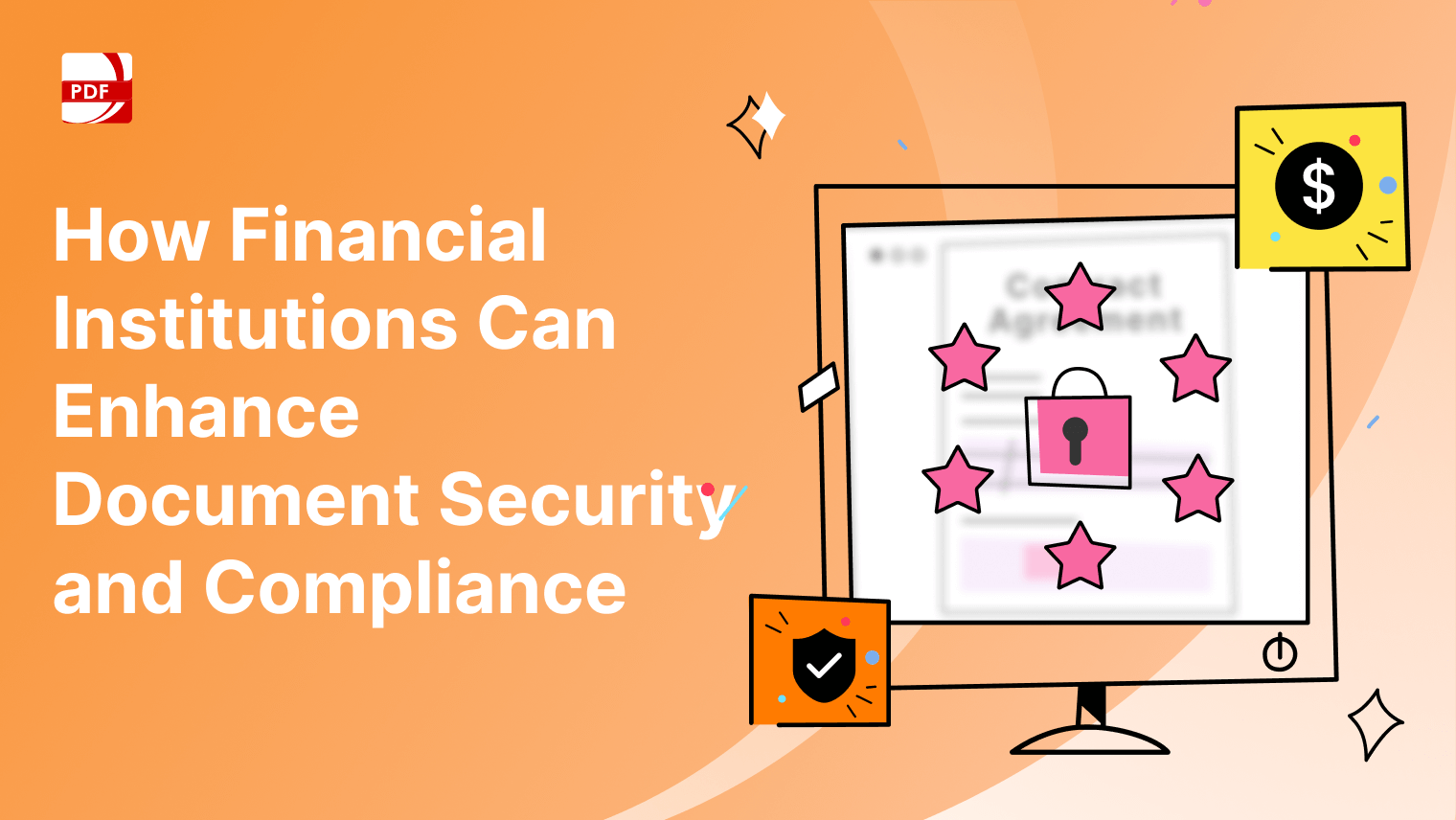Virtual printers, a concept gaining momentum in recent years, are poised to revolutionize the way we approach printing tasks. But what exactly are virtual printers, and will they eventually replace traditional printers altogether? We've put together a guide to this technology that's easy to understand, even if you're not in the printing industry.
Advantages and Challenges of Virtual Printers
Virtual printers are software-based solutions that simulate the functionality of physical printers without the need for a tangible device. Instead of producing hard copies on paper, virtual printers generate digital files in various formats, such as PDFs or image files. These digital files can then be stored, shared, or further processed electronically. We believe this is the next big thing when it comes to sharing, storing, and reading documents.
Advantages of Virtual Printers
-
Sustainable Practices: By reducing the need for physical printing in the print industry, virtual printers contribute to conservation efforts by minimizing paper consumption and waste with high-quality prints.
-
Cost-Effective: Virtual printing eliminates the expenses associated with maintaining physical printers in commercial printing, including ink or toner replacements and maintenance services.
-
Enhanced Accessibility: Virtual print solutions enable you to print from any device connected to the internet, offering unparalleled convenience and accessibility.
-
Streamlined Workflow: Virtual printers streamline document management processes by facilitating digital storage, retrieval, and sharing of files across platforms.
-
Customization Options: Digital print technology often comes with advanced customization features, allowing users to adjust settings, add annotations, or merge documents seamlessly.
Potential Challenges
-
Dependency on Internet Connectivity: While virtual printers offer flexibility for a range of industries, they rely on stable internet connections for optimal performance, posing challenges in areas with limited connectivity.
-
Security Concerns: Transmitting sensitive documents over the internet raises security concerns regarding data privacy and potential cyber threats.
-
Compatibility Issues: Virtual printers may encounter compatibility issues with certain file format printing or software applications, requiring additional troubleshooting steps.
-
Resistance to Change: Organizations accustomed to traditional print platform methods may exhibit reluctance to adopt virtual printers, citing concerns about reliability or unfamiliarity with new technology.
You can also read about future of printing.
How to Virtual Print to PDF on Windows
Let our team show you how to get started with digital printing. This can be helpful whether you're in the printing industry or not, as these digital technologies begin to become more common.
Step 1: Open PDF Reader Pro
Under "Advanced Tools" click on "Image to PDF".
Image Source: PDF Reader Pro
Step 2: Select the Image File
Choose "Add Files" if you need to print multiple images to PDF.
Image Source: PDF Reader Pro
Step 3: Click "Save as PDF"
Success! You've just virtually printed to PDF.
Image Source: PDF Reader Pro
You can also read about flattenning a PDF before printing.
How to Virtual Print to PDF on Mac
As opposed to traditional methods, digital printing technologies make way for a new way of storing and sharing while ensuring quality control. Learn how to do this on your Mac below:
To follow this tutorial (and a wide range of others that work with PDFs) at home, download PDF Reader Pro and start the virtual printing process with our essential tools:
Best Practices for Virtual Printing
To ensure the effective implementation of the virtual printing process, it's essential to follow best practices. Here are some key guidelines for following digital printing trends:
-
Evaluate Compatibility and Integration: Before implementing a virtual printing solution, assess its compatibility with existing hardware, software, and network infrastructure. Ensure seamless integration with operating systems, applications, and cloud services to enable smooth printing workflows.
-
Optimize Network Configuration: Configure network settings to optimize performance and reliability for virtual printing. Ensure sufficient bandwidth and network capacity to accommodate printing traffic, especially in environments with high printing volumes or remote users.
-
Implement Security Measures: Prioritize security measures to protect sensitive print data and prevent unauthorized access to print processes. Utilize encryption protocols, secure authentication methods, and access controls to safeguard print jobs and maintain data confidentiality.
-
Train Users on Best Practices: Provide comprehensive training and support to users on how to effectively use virtual printing solutions. Educate users on proper printing procedures, security protocols, and troubleshooting techniques to minimize errors and enhance productivity.
-
Monitor and Manage Print Queues: Regularly monitor and manage print queues to ensure efficient printing operations and prevent bottlenecks. Implement print management tools to track printing activity, manage print jobs, and optimize printer resources for maximum efficiency.
-
Regular Software Updates and Maintenance: Stay up to date with software updates and patches to ensure the virtual printing solution remains secure and functional. Perform regular maintenance tasks, such as cleaning print spools, updating drivers, and optimizing print settings, to keep the system running smoothly.
-
Implement Print Policies and Controls: Establish print policies and controls to regulate printing behavior and enforce cost-saving measures. Set print quotas, enforce duplex printing, and encourage responsible printing practices to minimize waste and reduce printing costs.
-
Monitor Printing Costs and Usage: Implement cost-tracking mechanisms to monitor printing expenses and usage patterns. Analyze printing metrics and reports to identify areas for cost reduction, optimize printing resources, and promote more efficient printing practices.
-
Regularly Review and Refine Processes: Continuously evaluate virtual printing processes and workflows to identify areas for improvement. Solicit feedback from users, assess performance metrics, and implement refinements to streamline printing operations and enhance user satisfaction.
The Outlook for Virtual Printers
Despite the challenges, the future looks promising for virtual printers as technological advancements continue to drive innovation in the printing landscape. As businesses and individuals increasingly prioritize digital workflows and sustainability, the demand for virtual printing solutions is expected to rise.
Several key trends and developments are shaping the outlook for this technology:
-
Increased Adoption in Remote Work Environments: With the rise of remote work and distributed teams, the demand for virtual printing solutions is expected to grow. Virtual printers enable employees to print documents from any location and device, enhancing flexibility and productivity in remote work environments.
-
Integration with Cloud Services: Virtual printers are increasingly being integrated with cloud services, allowing users to seamlessly access and print documents stored in cloud-based repositories such as Google Drive, Dropbox, and Microsoft OneDrive. This integration streamlines workflows and enables efficient document management across multiple platforms.
-
Enhanced Security Features: Security is a top priority for organizations adopting virtual printing solutions. In response to growing cybersecurity threats, virtual printers are incorporating advanced security features such as encryption, secure authentication, and audit trails to protect sensitive print jobs and prevent unauthorized access.
-
Advancements in Mobile Printing: Mobile printing capabilities are becoming more sophisticated, enabling users to print directly from their smartphones and tablets using virtual printing apps or built-in operating system features. This trend is driven by the increasing prevalence of mobile devices in the workplace and the need for seamless printing experiences on the go.
-
Integration with Document Management Systems: Virtual printers are being integrated with document management systems (DMS), enabling organizations to streamline document workflows, automate printing tasks, and ensure compliance with regulatory requirements. By connecting virtual printers with DMS platforms, organizations can achieve greater efficiency and control over their document processes.
-
Focus on Sustainability: As organizations strive to reduce their environmental footprint, virtual printing solutions are emerging as a sustainable alternative to traditional printing methods. By promoting digital document workflows and reducing paper consumption, virtual printers support eco-friendly practices and contribute to corporate sustainability initiatives.
FAQs: Virtual Printing
Have questions about the crucial role of virtual printers versus inkjet printers? Our team has put together an FAQ that will help print companies and individuals alike.
Can virtual printing be integrated with existing printing infrastructure?
Yes, virtual printing solutions can often be integrated with existing printing infrastructure, allowing organizations to leverage virtual and physical printing capabilities simultaneously. This integration enables flexible printing options based on specific needs and requirements.
Is virtual printing suitable for all types of documents?
Virtual printing is suitable for a wide range of documents, including text-based documents, spreadsheets, presentations, images, and more. However, the suitability may vary depending on factors such as the desired file format, document complexity, and printing requirements.
How does virtual printing contribute to sustainability?
Virtual printing reduces the need for physical printing, which helps conserve natural resources, reduce energy consumption, and minimize waste associated with paper, ink, and toner cartridges. By promoting digital document workflows, virtual printing supports environmentally friendly practices in the workplace.
Can virtual printing enhance collaboration and remote work?
Yes, virtual printing can enhance collaboration and remote work by facilitating the sharing and distribution of digital documents across geographic locations. Remote team members can easily access and collaborate on documents in real-time, fostering productivity and efficiency in virtual work environments.
What security measures are in place to protect virtual print jobs?
Virtual printing solutions often incorporate security features such as encryption, authentication, access controls, and audit trails to safeguard sensitive print jobs and prevent unauthorized access or data breaches. These measures help ensure the confidentiality, integrity, and availability of virtual print jobs.
Are there any limitations or challenges associated with virtual printing?
While virtual printing offers numerous benefits, some limitations or challenges may arise, such as compatibility issues with certain file formats or applications, network connectivity issues, and the need for adequate cybersecurity measures to protect digital assets. Additionally, organizations may need to address user training and change management to successfully transition to virtual printing workflows.
While virtual printers may not entirely replace traditional printers in the near future, they represent a significant shift towards digitalization and eco-friendly practices in printing. As technology evolves and user preferences evolve, virtual printers are poised to play a pivotal role in shaping the future of printing, offering efficient, cost-effective, and environmentally sustainable solutions for document management and printing needs.


